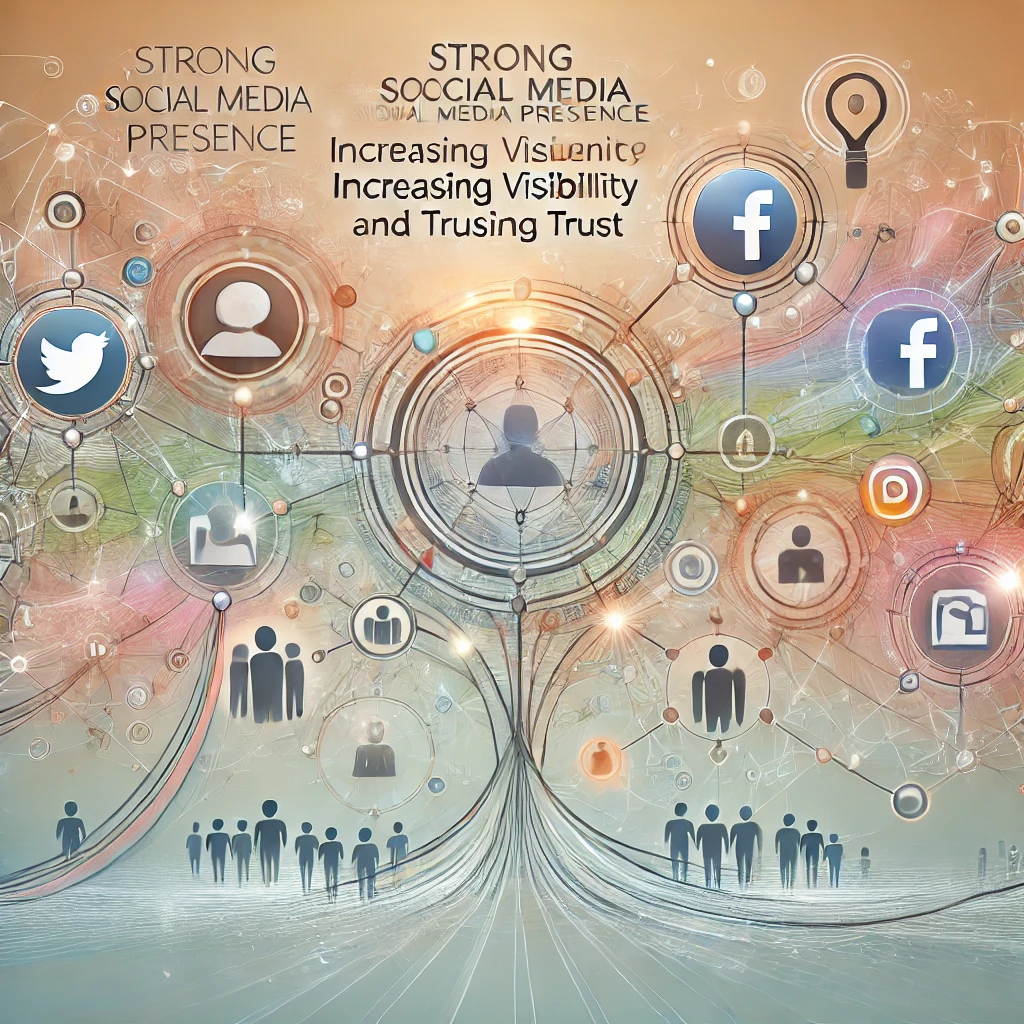
Keeping Up with Latest SEO Trends in Drug Rehab Industry: Expert Insights
Table of Contents
social media presence for drug rehab
Understanding the Importance of Social Media in Drug Rehab Marketing
In the modern digital age, social media is not just a platform for sharing personal updates. It has evolved into a powerful marketing tool, especially for niche industries like drug rehab. Using social media effectively can significantly boost your facility's visibility and engagement. Here's why it matters.
The Role of Social Media in Modern Marketing
Social media plays a crucial role in connecting businesses with their target audience. For drug rehab centers, it offers a unique opportunity to reach potential clients and their families who are seeking support and information.
- Broad Reach: Platforms like Facebook, Instagram, and Twitter have millions of users. These platforms allow you to target specific demographics, ensuring your message reaches the right people.
- Cost-Effective Advertising: Compared to traditional advertising, social media marketing is often more affordable and can deliver better ROI. Targeted ads can reach users who are actively searching for rehab solutions.
- Building Trust: Sharing success stories, client testimonials, and informative content can help build trust with your audience. This is vital in the drug rehab industry where trust is a key factor in choosing a facility.
Why Drug Rehab Centers Need a Strong Social Media Presence
Having a strong social media presence is essential for drug rehab centers for several reasons:
- Increased Visibility: A well-managed social media profile can increase your facility's visibility in search results. Regularly posting valuable content can keep your audience engaged and informed.
- Engagement with Audience: Social media allows for direct interaction with your audience. Responding to comments, messages, and reviews shows that you care about your clients and their experiences.
- Community Building: Social media can help you build an online community where people can share their experiences and support each other. This sense of community can be incredibly supportive for those in recovery.
- Data Insights: Social media platforms provide valuable data and insights about your audience. Understanding their behavior and preferences can help tailor your marketing strategies more effectively.
- Competitor Analysis: Social media also allows you to monitor what your competitors are doing. This can help you stay ahead of trends and identify areas where you can improve.
Incorporating social media into your marketing strategy is not optional; it’s a necessity. By leveraging the power of social media, drug rehab centers can reach more people, build stronger connections, and ultimately, help more individuals on their path to recovery.
Crafting Effective Social Media Strategies for Drug Rehab Facilities
Social media is a powerful tool for drug rehab centers looking to connect with their audience and build a strong online presence. To maximize its potential, it's important to craft effective strategies that engage and inform. Here’s how to do it:
Optimizing Social Media Profiles for Maximum Impact
Your social media profiles are often the first point of contact with potential clients. Ensuring they are optimized can make a significant difference in how your facility is perceived.
- Consistent Branding: Use the same logo, colors, and tone of voice across all platforms. This creates a cohesive and professional image.
- Clear Information: Include essential details like contact information, location, services offered, and a link to your website. Make sure this information is easy to find.
- Keywords: Incorporate relevant keywords, such as “drug rehab”, “substance abuse treatment”, and “recovery programs”, in your bio and posts to improve search visibility.
- Visual Appeal: Use high-quality images and videos. Visual content tends to attract more engagement than text alone.
Creating Engaging Content for Social Media
Content is king on social media. To keep your audience engaged, you need to consistently provide valuable and interesting content.
- Educational Posts: Share articles, infographics, and videos that educate your audience about addiction, recovery, and mental health.
- Success Stories: Highlight client testimonials and success stories. These not only provide hope but also build credibility and trust.
- Interactive Content: Use polls, Q&A sessions, and live videos to interact directly with your audience. This increases engagement and allows you to address their questions and concerns in real time.
- Regular Updates: Post regularly to keep your audience engaged. Create a content calendar to plan and schedule your posts.
Utilizing Different Social Media Platforms
Each social media platform has its own strengths and user base. Utilizing multiple platforms can help you reach a broader audience.
- Facebook: Ideal for creating a community and sharing longer content. Use Facebook Groups to build a support community for people in recovery.
- Instagram: Great for visual content. Share inspiring images, behind-the-scenes looks at your facility, and short videos.
- Twitter: Use for quick updates, sharing news, and engaging with your audience through tweets and retweets.
- LinkedIn: Focus on connecting with professionals in the healthcare industry. Share articles and updates about your facility’s achievements and industry news.
By optimizing your social media profiles, creating engaging content, and utilizing different platforms effectively, you can enhance your drug rehab center's online presence and connect with more people who need your services.

Engaging with Your Target Audience
Connecting with your target audience is key to the success of any marketing strategy, especially in the drug rehab industry. Building trust and creating meaningful interactions can lead to increased engagement and better outcomes. Here’s how to effectively engage with your audience on social media.
Building and Engaging Online Communities
Online communities can provide a sense of belonging and support for individuals seeking recovery. Creating and nurturing these communities is essential for engagement.
- Create Support Groups: Start private Facebook groups or online forums where people can share their experiences and support each other.
- Regular Interaction: Engage with group members regularly. Respond to comments, answer questions, and participate in discussions to show that your facility cares.
- Share Valuable Content: Post content that is informative and supportive, such as recovery tips, success stories, and expert advice. This not only helps your audience but also establishes your facility as a trusted resource.
Social Media Advertising for Drug Rehab Centers
Social media advertising can significantly boost your reach and engagement. Here are some strategies to consider:
- Targeted Ads: Use platforms like Facebook and Instagram to run ads targeting specific demographics, such as age, location, and interests. This ensures that your ads reach those most likely to need your services.
- Compelling Visuals: Use high-quality images and videos in your ads to capture attention. Visual content tends to perform better and attract more engagement.
- Clear Call-to-Action (CTA): Ensure your ads have a clear CTA, such as "Contact us for more information" or "Join our support group today". This guides potential clients on what to do next.
Monitoring and Measuring Engagement
To understand the effectiveness of your social media strategies, it’s crucial to monitor and measure engagement. This helps you refine your approach and improve outcomes.
- Analytics Tools: Use tools like Facebook Insights, Instagram Analytics, and Twitter Analytics to track engagement metrics such as likes, shares, comments, and click-through rates.
- Adjust Strategies: Based on the data, adjust your content and strategies to better meet the needs of your audience. For instance, if video content receives more engagement, consider creating more videos.
- Feedback Loop: Encourage feedback from your audience. Use surveys, polls, and direct messages to understand their needs and preferences better.
By building and engaging online communities, leveraging social media advertising, and monitoring engagement, drug rehab centers can create a strong connection with their audience. This not only enhances your online presence but also supports individuals in their recovery journey.

Best Practices for Social Media Marketing in Drug Rehab
Social media marketing is a powerful way for drug rehab centers to connect with potential clients and build a supportive community. By following best practices, you can enhance your social media presence and engage your audience effectively. Here are some key strategies to consider.
Consistency and Frequency of Posts
Consistency in posting is crucial to maintain an active and engaging social media presence.
- Regular Posting Schedule: Establish a posting schedule and stick to it. Whether it's daily, bi-weekly, or weekly, consistency helps keep your audience engaged.
- Balanced Content Mix: Share a variety of content types, including educational posts, success stories, tips for recovery, and updates about your facility. This keeps your feed interesting and informative.
- Automated Tools: Use tools like Hootsuite or Buffer to schedule posts in advance. This ensures that you maintain a consistent posting schedule without missing any important dates.
Responding to Audience Interaction
Engaging with your audience builds trust and fosters a sense of community.
- Timely Responses: Respond to comments and messages promptly. A quick response shows that you care about your audience's needs and concerns.
- Personal Touch: Use a friendly and empathetic tone when interacting with followers. Personalized responses can make a big difference in building connections.
- Encourage Engagement: Ask questions in your posts and encourage followers to share their thoughts and experiences. This not only increases interaction but also provides valuable insights into your audience's needs.
Staying Up-to-Date with Social Media Trends
Social media is constantly evolving, and staying updated with the latest trends can give you a competitive edge.
- Follow Industry Leaders: Keep an eye on social media influencers and leaders in the drug rehab industry. Their strategies can provide inspiration and new ideas for your own content.
- Join Relevant Groups: Participate in social media groups related to addiction recovery and mental health. These groups can provide insights into current discussions and trends.
- Regular Training: Attend webinars and training sessions on social media marketing. This will help you stay informed about new features and best practices.
By maintaining consistency in your posts, actively engaging with your audience, and staying current with social media trends, your drug rehab center can effectively leverage social media to reach and support more individuals in need.

Case Studies and Success Stories
Highlighting successful social media campaigns in the drug rehab industry can provide valuable insights and inspiration. Learning from these examples can help refine your own strategies and improve your online presence.
Successful Social Media Campaigns in Drug Rehab
- Recovery Center X: Community Engagement Campaign
- Objective: To create a supportive online community for individuals in recovery.
- Strategy: They launched a Facebook group focused on peer support, shared weekly motivational content, and hosted live Q&A sessions with addiction specialists.
- Results: The group grew to over 10,000 members within six months, fostering a strong sense of community and support. Engagement rates increased by 50%, with members actively participating in discussions and sharing their stories.
- Rehab Facility Y: Instagram Awareness Campaign
- Objective: To raise awareness about the facility's services and success stories.
- Strategy: They posted high-quality images and videos featuring staff, facility tours, and client testimonials. They also used Instagram Stories to share daily tips and motivational quotes.
- Results: The campaign reached over 100,000 users, resulting in a 30% increase in inquiries and a 20% increase in admissions. The engaging content also boosted their follower count by 40%.
- Center Z: Twitter Outreach Campaign
- Objective: To engage with a broader audience and share informative content about addiction and recovery.
- Strategy: They tweeted daily facts about addiction, recovery tips, and links to relevant articles. They also engaged with followers by retweeting and responding to comments.
- Results: The campaign led to a 25% increase in followers and a significant rise in website traffic. The informative tweets were frequently shared, extending their reach even further.
Lessons Learned from Effective Social Media Strategies
- Consistency is Key: Regular posting keeps your audience engaged and informed. Stick to a schedule and ensure your content is varied and relevant.
- Engage Authentically: Respond to comments and messages promptly. Genuine interactions build trust and a sense of community.
- Leverage Visual Content: High-quality images and videos are more likely to attract attention and engagement. Use these to showcase your facility and share success stories.
- Monitor and Adjust: Use analytics to track the performance of your posts. Adjust your strategies based on what works best for your audience.
- Use Multiple Platforms: Different platforms have different strengths. Use a mix of Facebook, Instagram, Twitter, and LinkedIn to reach a broader audience.
By studying these case studies and applying the lessons learned, drug rehab centers can enhance their social media presence and effectively engage with their target audience.

Conclusion
In the fast-paced world of digital marketing, keeping up with the latest SEO trends is vital for the success of drug rehab centers. By leveraging expert insights and implementing effective strategies, you can enhance your online presence and reach a wider audience. Here’s a recap of the key strategies and a look at future trends in social media marketing for drug rehab.
Recap of Key Strategies
- Consistency and Frequency of Posts
- Regular posting schedules maintain engagement.
- A balanced content mix keeps your feed interesting and relevant.
- Automated tools help ensure consistency.
- Engaging with Your Audience
- Timely responses build trust and show care.
- Personalized interactions foster a sense of community.
- Encouraging feedback provides valuable insights into audience needs.
- Optimizing Social Media Profiles
- Consistent branding creates a professional image.
- Clear information makes it easy for potential clients to find you.
- High-quality visuals enhance engagement.
- Building and Engaging Online Communities
- Creating support groups fosters a sense of belonging.
- Regular interaction with group members shows that you care.
- Sharing valuable content helps establish your facility as a trusted resource.
- Leveraging Social Media Advertising
- Targeted ads reach the right demographics.
- Compelling visuals capture attention.
- Clear CTAs guide potential clients to take action.
- Monitoring and Measuring Engagement
- Analytics tools track performance.
- Adjusting strategies based on data improves outcomes.
- Encouraging audience feedback helps tailor your approach.
Future Trends in Social Media Marketing for Drug Rehab
As technology evolves, so do social media marketing strategies. Staying ahead of these trends can give your drug rehab center a competitive edge.
- Increased Use of Video Content: Short videos, live streams, and stories are becoming more popular. These formats are engaging and can convey complex messages in a concise way.
- Personalized Content: Tailoring content to individual preferences and behaviors can significantly enhance engagement. Using data to create personalized experiences will be key.
- Social Commerce: Integrating shopping features directly into social media platforms is on the rise. For drug rehab centers, this could mean easier access to resources and services.
- AI and Chatbots: Artificial intelligence can help automate responses and provide instant support to potential clients. This improves user experience and engagement.
- Focus on Privacy and Transparency: With growing concerns over privacy, being transparent about how you use data will build trust with your audience.
Staying updated with these trends and continuously refining your strategies will help your drug rehab center thrive in the competitive digital landscape.
Questions You Might Ponder
Why is social media important for drug rehab marketing?
Social media is crucial for drug rehab marketing because it allows facilities to connect with a broad audience, build trust, and share valuable information. Platforms like Facebook, Instagram, and Twitter help target specific demographics, ensuring that messages reach those who need support the most. Additionally, social media marketing is cost-effective compared to traditional methods, offering better return on investment through targeted ads and community engagement.
What are some effective social media strategies for drug rehab centers?
Effective social media strategies for drug rehab centers include optimizing profiles with consistent branding and clear information, creating engaging content like educational posts and success stories, and utilizing various platforms such as Facebook for community building, Instagram for visual content, and Twitter for quick updates. Additionally, leveraging social media advertising with targeted ads and compelling visuals, and regularly monitoring engagement through analytics tools, can greatly enhance visibility and interaction.
What are the benefits of social media advertising for drug rehab facilities?
Social media advertising benefits drug rehab facilities by significantly boosting reach and engagement. Targeted ads can be designed to reach specific demographics, ensuring that the right people see them. High-quality images and videos in ads capture attention, while clear calls-to-action guide potential clients on what steps to take next. This focused approach leads to higher inquiry and admission rates, enhancing the facility's overall effectiveness in reaching those in need.
How can drug rehab centers monitor and measure social media engagement?
Drug rehab centers can monitor and measure social media engagement using analytics tools like Facebook Insights, Instagram Analytics, and Twitter Analytics. These tools track metrics such as likes, shares, comments, and click-through rates. By analyzing this data, centers can adjust their content and strategies to better meet audience needs, ensuring more effective engagement. Additionally, encouraging feedback through surveys and direct messages provides further insights into audience preferences.
Why is consistent posting important for social media marketing in drug rehab?
Consistent posting is important for social media marketing in drug rehab because it keeps the audience engaged and informed. A regular posting schedule ensures that followers receive continuous updates and valuable content, maintaining their interest. Consistency also helps build credibility and trust, showing that the facility is active and reliable. Additionally, regular posts improve visibility in search results and algorithms, enhancing the facility’s online presence and reach.
How can drug rehab centers use analytics to improve their social media strategies?
Drug rehab centers can use analytics to improve their social media strategies by tracking engagement metrics such as likes, shares, comments, and click-through rates. Tools like Facebook Insights and Instagram Analytics provide detailed data on audience behavior and preferences. By analyzing this data, centers can identify which types of content perform best and adjust their strategies accordingly. This data-driven approach ensures more effective and targeted engagement, leading to better outcomes.
How will you adapt to these future trends in social media marketing? Start by incorporating more video content into your strategy.